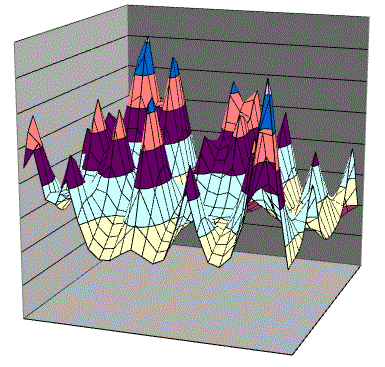How PPM differs from modern portfolio theory
Many PPM experts cite finance's modern portfolio theory (MPT) as justification for selecting projects via portfolio optimization. However, financial portfolios differ fundamentally from project portfolios. When building a financial portfolio one faces a constant level of uncertainty. Tomorrow's stock prices are as uncertain as today's prices were yesterday. Projects are different because risk and uncertainty diminish as projects progress down a pipeline.
Scholars distinguish between these situations by using the terms static and dynamic. When investing in financial assets, uncertainty does not diminish from one decision period to the next. In this environment, jointly considering multiple selection periods offers no benefit, so one considers the selection decisions for only a single point in time. The portfolio optimization in MPT models a snapshot in time — a static model.
Selecting projects is different. Investing in a project produces work that diminishes a project's risk and uncertainty. If one makes successive selection decisions, as in drug development pipelines, upstream decisions should strive to set up a pipeline for success, rather than merely maximize portfolio value. Considering the downstream impact of decisions creates great value. It is why people manage projects, but not financial assets, by using pipelines (phase-gate systems).
The academic term for multi-period optimization is dynamic programming. In business, managers confront a mismatch. PPM's best practices advise applying project portfolio optimization to pipelines, but by definition, applying a static model to a dynamic system is suboptimal. Unfortunately, few academic papers present dynamic programming models of pipelines, so scholars provide little help to practitioners
Using drug development as an example, let's illustrate the difference between project portfolio optimization and pipeline management. Recall, uncertainty resolves as compounds progress down a pipeline.
- Suppose phase IIA resolves only a small amount of uncertainty. How many compounds should one advance into phase I?
- Now suppose phase IIA resolves considerable uncertainty, which is a crucial goal for many pharmaceutical companies. How many compounds should one advance to phase I?
Here's the answer derived from my mathematical modeling of pipelines.
- If phase IIA resolves more uncertainty, you should send more compounds to phase I.
You can view my analysis in by reading my pipeline physics research proposal. (Contact me for the password needed to view the proposal.)
A pipeline's reduction of uncertainty affects all aspects of pipeline management, including shaping a pipeline's funnel, as described above. Executives should design compound evaluation methods and compound selection methods and criteria to exploit the reduction in uncertainty. How is this done? For some ideas, see my discussions, "How to make drug development more productive" and "Managing drug development pipelines."
After reading my discussions, many managers wish to share their experiences, thoughts and critiques of my ideas. I always welcome and reply to their comments.
Please share your thoughts with me by using form below. I will send reply to you via email. If you prefer to be contacted by phone, fax or postal mail, please send your comments via my contact page.
© 2014 Pipeline Physics. All rights reserved.
